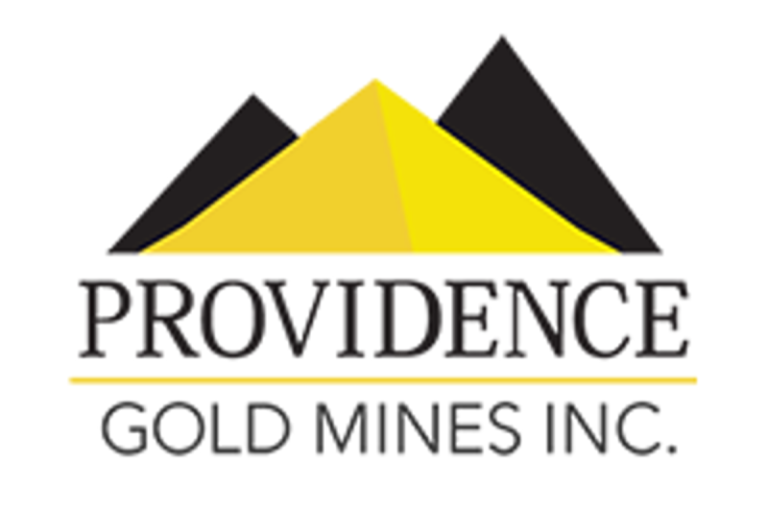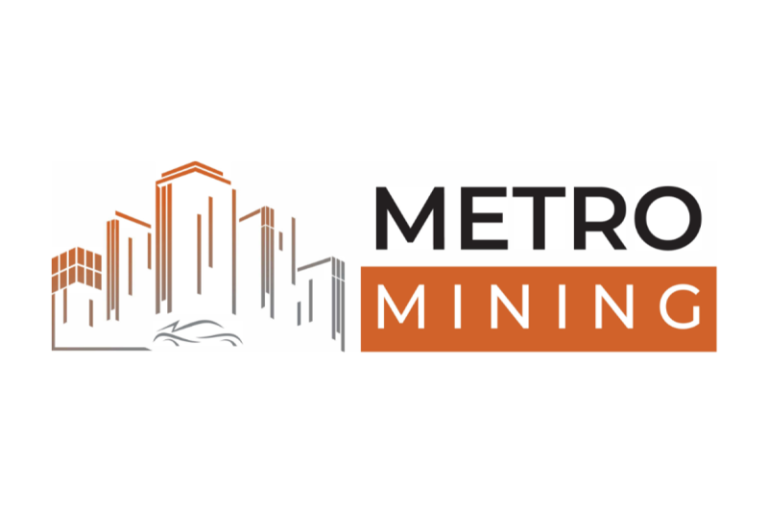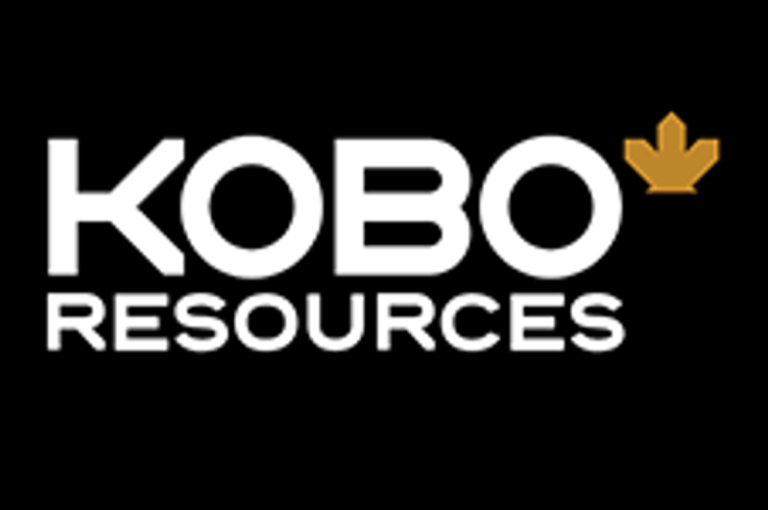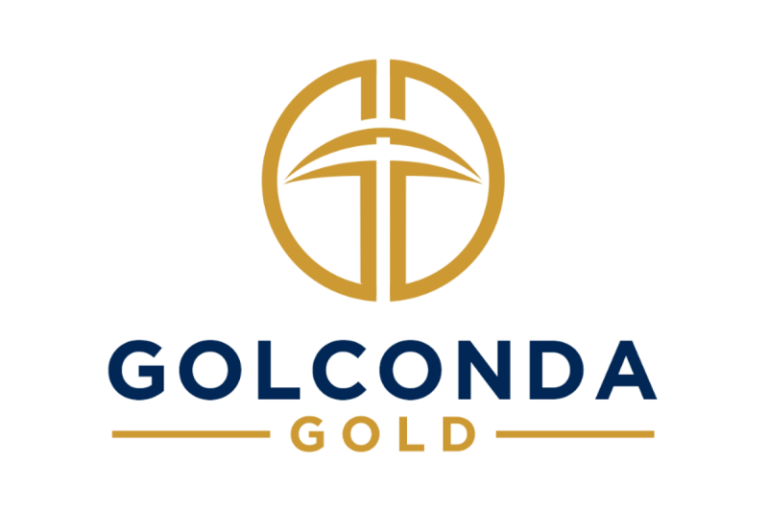- High-grade gold intercepts confirm strong continuity at the Road Cut Zone with multiple parallel shears traced along the Contact Zone Fault
- Drilling continues to expand mineralisation at the Jagger Zone, confirming gold-bearing shears to depths exceeding 240 m and reinforcing the strength of Kobo’s structural model
- Ongoing 12,000–15,000 m program advancing toward Kobo’s maiden Mineral Resource Estimate, with two rigs active and geological modelling underway across priority targets
Kobo Resources Inc. (‘ Kobo’ or the ‘ Company ‘) ( TSX.V: KRI ) is pleased to report additional diamond drill results from the Jagger and Road Cut Zones at its 100%-owned Kossou Gold Project (‘ Kossou ‘) in Côte d’Ivoire, West Africa. The new results continue to confirm strong continuity of high-grade gold mineralisation at Kossou and enhance the Company’s confidence in the emerging scale and potential of its highly prospective target areas.
This press release features multimedia. View the full release here: https://www.businesswire.com/news/home/20251008273472/en/
Figure 1: Road Cut Zone Drill Hole Location Map and Simplified Geology
Diamond Drill Results Highlights:
Road Cut Zone:
- KDD0095
- 17.0 metres (‘m’) at 3.87 g/t Au from 22.0, including 9.0 m at 6.84 g/t Au, from 23.0 m
- KDD0098
- 6.0 m at 1.48 g/t Au from 157.0 m
- KDD0099
- 5.0 m at 2.82 g/t Au from 170.0 m (Contact Zone Target)
Jagger Zone
- KDD0096
- 4.0 m at 1.48 g/t Au from 21.0 m
- 3.0 m at 2.34 g/t Au from 31.0 m
- 5.0 m at 1.41 g/t Au from 106.0 m
- KDD0097
- 4.0 m at 2.30 g/t Au from 240.0 m
- 6.0 m at 1.52 g/t Au from 350.0 m
These results represent the first six holes from Kobo’s ongoing 12,000–15,000 m diamond drilling program launched on September 4, 2025. The current campaign is focused on systematically expanding known mineralized zones at the Jagger and Road Cut Zones while testing the interpreted structural corridor that links them. Drilling is also continuing to evaluate the Contact Zone Fault ‘( CZ Fault ‘), an important regional structure believed to provide deep fluid pathways for gold mineralisation at Kossou.
Edward Gosselin, CEO and Director of Kobo commented: ‘The latest intersections continue to demonstrate the strength of gold mineralisation within the Road Cut and Jagger structural zones. These results are confirming the continuity of gold-bearing shears and the importance of the Contact Zone Fault as a potential regional control on mineralisation. Particularly, the consistency of gold mineralisation at the Jagger Zone, from surface to greater than 180 m depth, highlights the continuity and strength of the system.’ He continued: ‘Ongoing drilling will allow us to further test these controls, define extensions along strike and at depth, and continue building a comprehensive geological model for Kossou as we progress toward a maiden Resource Estimate on the project.’
Road Cut Zone Highlights
KDD0095, KDD0098, and KDD0099 were drilled along a 150-metre strike length on Sections RCZ500, RCZ600, and RCZ650 (see Figure 1 for drill-hole locations). Full assay results are presented in Table 1 .
The most significant intersection was returned from KDD0095 on Section RCZ500, averaging 17.0 m at 3.87 g/t Au from 22.0 m, including 9.0 m at 6.84 g/t Au from 23.0 m (see Figure 2 and Figure 3). This intercept occurs approximately 20 m beneath artisanal workings and is hosted within a shear zone previously intersected in KDD0012 (11.0 m at 1.71 g/t Au) and KDD0091 (15.55 m at 2.30 g/t Au) . The shear zone parallels the main CZ Fault and lies roughly 60 m west of this structure, suggesting a close spatial and structural relationship.
KDD0098 , drilled on Section RCZ600 , intersected 6.0 m at 1.48 g/t Au from 157.0 m within a shear zone exhibiting typical alteration and quartz veining approximately 12.0 m from the CZ Fault. The mineralisation occurs about 120.0 m below surface. Several additional lower-grade intervals were also intersected within 50.0 m of the CZ Fault in sheared basalt (see Figure 4).
KDD0099 , located approximately 50 m south of KDD0098 on Section RCZ650, intersected 5.0 m at 2.82 g/t Au from 170.0 m directly on the CZ Fault, confirming the presence of gold mineralisation along this important regional structure (see Figure 5).
The intensity of shearing, alteration and quartz veining in the three drill holes in the vicinity of the artisanal mine and CZ Fault is very encouraging for further gold mineralisation and will be further tested with additional diamond drilling.
Jagger Zone Highlights
KDD0094 , KDD0096 , and KDD0097 were drilled on Section JZ600 to evaluate the core mineralisation previously identified and to test the continuity of Structure JZ6 near surface and at depth (see Figures 6 and 7).
KDD0096 intersected 5.0 m at 1.41 g/t Au associated with Structure JZ6, approximately 65 m below surface. KDD0097 , which targeted the 8.0 m at 3.72 g/t Au intersection in KDD0028 at depth, returned 2.0 m at 0.58 g/t Au . Drilling confirms that well-defined shears extend to at least 240 m below surface, with gold grades corresponding to the density of quartz veining within these structures.
Additional intersections of 4.0 m at 2.30 g/t Au and 6.0 m at 1.52 g/t Au in KDD0097 , associated with Structures JZ1 and JZ4 respectively, demonstrate good continuity between 150 m and 180 m depth along the shear zones. These results further validate the Company’s structural model, indicating that gold mineralisation is hosted within a series of steep, westerly dipping shears closely associated with quartz-feldspar porphyry and diorite intrusives within the basaltic volcanic sequence.
Next Steps: Progressing the 2025 Drill Program and Advancing Resource Definition at Kossou
To date, the Company has completed nine diamond drill holes (2,016 m) of a planned 15-hole program (3,600 m) at the Road Cut Zone, and eight holes (2,820 m) of 23 planned holes (11,300 m) at the Jagger and Jagger South Zones. Two drill rigs remain active on site, with drilling continuing to test extensions along strike and at depth across both zones.
Geological modelling of the Jagger and Road Cut Zones is ongoing, with new data being integrated to refine the Company’s structural interpretation and support the definition of mineralized envelopes in advance of Kossou’s maiden mineral resource estimate.
Table 1: Summary of Significant Diamond Drill Hole Results
|
BHID
|
|
East
|
|
North
|
|
Elev.
|
|
Az.
|
|
Dip
|
|
Length
|
|
|
From
(m)
|
|
To (m)
|
|
Int.
(m)
|
|
Au
g/t
|
|
Target
|
|
KDD0094
|
|
229130
|
|
775335
|
|
339
|
|
70
|
|
-50
|
|
110.40
|
No Significant Intersections
|
|
|
|
Jagger
|
|
KDD0095
|
|
228562
|
|
776300
|
|
209
|
|
70
|
|
-50
|
|
152.30
|
|
|
22.00
|
|
39.00
|
|
17.00
|
|
3.87
|
|
RCZ
|
|
|
|
|
|
|
|
|
|
|
|
|
|
incl.
|
|
23.00
|
|
32.00
|
|
9.00
|
|
6.84
|
|
RCZ
|
|
|
|
|
|
|
|
|
|
|
|
|
|
|
|
79.00
|
|
82.00
|
|
3.00
|
|
0.55
|
|
RCZ
|
|
|
|
|
|
|
|
|
|
|
|
|
|
|
|
95.00
|
|
97.00
|
|
2.00
|
|
0.70
|
|
RCZ
|
|
|
|
|
|
|
|
|
|
|
|
|
|
|
|
101.00
|
|
104.00
|
|
3.00
|
|
0.68
|
|
RCZ
|
|
KDD0096
|
|
229088
|
|
775320
|
|
344
|
|
70
|
|
-50
|
|
158.40
|
|
|
14.00
|
|
16.00
|
|
2.00
|
|
1.00
|
|
Jagger
|
|
|
|
|
|
|
|
|
|
|
|
|
|
|
|
21.00
|
|
25.00
|
|
4.00
|
|
1.48
|
|
Jagger
|
|
|
|
|
|
|
|
|
|
|
|
|
|
|
|
31.00
|
|
34.00
|
|
3.00
|
|
2.34
|
|
Jagger
|
|
|
|
|
|
|
|
|
|
|
|
|
|
|
|
106.00
|
|
111.00
|
|
5.00
|
|
1.41
|
|
Jagger
|
|
KDD0097
|
|
228841
|
|
775230
|
|
387
|
|
70
|
|
-50
|
|
431.30
|
|
|
68.00
|
|
70.00
|
|
2.00
|
|
1.04
|
|
Jagger
|
|
|
|
|
|
|
|
|
|
|
|
|
|
|
|
76.00
|
|
80.00
|
|
4.00
|
|
0.49
|
|
Jagger
|
|
|
|
|
|
|
|
|
|
|
|
|
|
|
|
87.00
|
|
90.00
|
|
3.00
|
|
1.10
|
|
Jagger
|
|
|
|
|
|
|
|
|
|
|
|
|
|
|
|
240.00
|
|
244.00
|
|
4.00
|
|
2.30
|
|
Jagger
|
|
|
|
|
|
|
|
|
|
|
|
|
|
|
|
281.00
|
|
287.00
|
|
6.00
|
|
1.52
|
|
Jagger
|
|
|
|
|
|
|
|
|
|
|
|
|
|
|
|
303.00
|
|
310.00
|
|
7.00
|
|
0.57
|
|
Jagger
|
|
|
|
|
|
|
|
|
|
|
|
|
|
|
|
350.00
|
|
352.00
|
|
2.00
|
|
1.68
|
|
Jagger
|
|
|
|
|
|
|
|
|
|
|
|
|
|
|
|
362.00
|
|
364.00
|
|
2.00
|
|
1.11
|
|
Jagger
|
|
|
|
|
|
|
|
|
|
|
|
|
|
|
|
378.00
|
|
380.00
|
|
2.00
|
|
0.58
|
|
Jagger
|
|
|
|
|
|
|
|
|
|
|
|
|
|
|
|
400.00
|
|
402.00
|
|
2.00
|
|
1.20
|
|
Jagger
|
|
KDD0098
|
|
228557
|
|
776191
|
|
215
|
|
70
|
|
-50
|
|
203.30
|
|
|
117.30
|
|
124.00
|
|
6.70
|
|
0.37
|
|
RCZ
|
|
|
|
|
|
|
|
|
|
|
|
|
|
|
|
150.00
|
|
152.00
|
|
2.00
|
|
0.85
|
|
RCZ
|
|
|
|
|
|
|
|
|
|
|
|
|
|
|
|
157.00
|
|
163.00
|
|
6.00
|
|
1.48
|
|
RCZ
|
|
KDD0099
|
|
228592
|
|
776152
|
|
215
|
|
70
|
|
-50
|
|
221.30
|
|
|
170.00
|
|
175.00
|
|
5.00
|
|
2.82
|
|
RCZ
|
|
Notes:
Cut-off using 2.0 m at 0.30 g/t Au
Intervals are reported with no more than 3.0 m of internal dilution of less than 0.3 g/t Au except where indicated*
|
An accurate dip and strike and controls of mineralisation are unconfirmed and mineralised zones are reported as downhole lengths. Drill holes are planned to intersect mineralised zones perpendicular to interpreted targets. All intercepts reported are downhole distances as true width is unknown.
Sampling, QA/QC, and Analytical Procedures
Drill core was logged and sampled by Kobo personnel at site. Drill cores were sawn in half, with one half remaining in the core box and the other half secured into new plastic sample bags with sample number tickets. Core samples are drilled using HQ core barrels to below the level of oxidation and then reduced to NQ core barrels for the remainder of the bore hole. Samples are transported to the SGS Côte d’Ivoire facility in Yamoussoukro by Kobo personnel where the entire sample was prepared for analysis (prep code PRP86/PRP94). Sample splits of 50 grams were then analysed for gold using 50g Fire Assay as per SGS Geochem Method FAA505. QA/QC procedures for the drill program include insertion of a certificated standards every 20 samples, a blank every 20 samples and a duplicate sample every 20 samples. All QAQC control samples returned values within acceptable limits.
Review of Technical Information
The scientific and technical information in this press release has been reviewed and approved by Paul Sarjeant, P.Geo., who is a Qualified Persons as defined in National Instrument 43-101. Mr. Sarjeant is the President and Chief Operating Officer and Director of Kobo.
About Kobo Resources Inc.
Kobo Resources is a growth-focused gold exploration company with a compelling new gold discovery in Côte d’Ivoire, one of West Africa’s most prolific and developing gold districts, hosting several multi-million-ounce gold mines. The Company’s 100%-owned Kossou Gold Project is located approximately 20 km northwest of the capital city of Yamoussoukro and is directly adjacent to one of the region’s largest gold mines with established processing facilities.
With over 18,500 metres of diamond drilling, nearly 5,900 metres of reverse circulation (RC) drilling, and 5,900 metres of trenching completed since 2023, Kobo has made significant progress in defining the scale and prospectivity of its Kossou’s Gold Project. Exploration has focused on multiple high-priority targets within a 9+ km strike length of highly prospective gold-in-soil geochemical anomalies, with drilling confirming extensive mineralisation at the Jagger, Road Cut, and Kadie Zones. The latest phase of drilling has further refined structural controls on gold mineralisation, setting the stage for the next phase of systematic exploration and resource development.
Beyond Kossou, the Company is advancing exploration at its Kotobi Permit and is actively expanding its land position in Côte d’Ivoire with prospective ground, aligning with its strategic vision for long-term growth in-country. Kobo remains committed to identifying and developing new opportunities to enhance its exploration portfolio within highly prospective gold regions of West Africa. Kobo offers investors the exciting combination of high-quality gold prospects led by an experienced leadership team with in-country experience. Kobo’s common shares trade on the TSX Venture Exchange under the symbol ‘KRI’. For more information, please visit www.koboresources.com .
NEITHER THE TSXV NOR ITS REGULATION SERVICES PROVIDER (AS THAT TERM IS DEFINED IN THE POLICIES OF THE TSXV) ACCEPTS RESPONSIBILITY FOR THE ADEQUACY OR ACCURACY OF THIS RELEASE.
Cautionary Statement on Forward-looking Information:
This news release contains ‘forward-looking information’ and ‘forward-looking statements’ (collectively, ‘forward-looking statements’) within the meaning of the applicable Canadian securities legislation. All statements, other than statements of historical fact, are forward-looking statements and are based on expectations, estimates and projections as at the date of this news release. Any statement that involves discussions with respect to predictions, expectations, beliefs, plans, projections, objectives, assumptions, future events or performance (often but not always using phrases such as ‘expects’, or ‘does not expect’, ‘is expected’, ‘anticipates’ or ‘does not anticipate’, ‘plans’, ‘budget’, ‘scheduled’, ‘forecasts’, ‘estimates’, ‘believes’ or ‘intends’ or variations of such words and phrases or stating that certain actions, events or results ‘may’ or ‘could’, ‘would’, ‘might’ or ‘will’ be taken to occur or be achieved) are not statements of historical fact and may be forward-looking statements Forward-looking statements are necessarily based upon a number of estimates and assumptions that, while considered reasonable, are subject to known and unknown risks, uncertainties, and other factors which may cause the actual results and future events to differ materially from those expressed or implied by such forward-looking statements. Such factors include, but are not limited to: general business, economic, competitive, political and social uncertainties; and the delay or failure to receive board, shareholder or regulatory approvals. There can be no assurance that such statements will prove to be accurate, as actual results and future events could differ materially from those anticipated in such statements. Accordingly, readers should not place undue reliance on the forward-looking statements and information contained in this news release. Except as required by law, Kobo assumes no obligation and/or liability to update the forward-looking statements of beliefs, opinions, projections, or other factors, should they change, except as required by law.
View source version on businesswire.com: https://www.businesswire.com/news/home/20251008273472/en/
For further information, please contact:
Edward Gosselin
Chief Executive Officer and Director
1-418-609-3587
ir@kobores.com
Twitter: @KoboResources | LinkedIn: Kobo Resources Inc.










